Glasgow Village is a perfect example of an inner ring suburb that sprung up along the City of St. Louis border in the early 1950s. On this map, you’ll see that the last thread of the City boundary (Ward 2) hugs Riverview Drive. When they began developing this land along the Mississippi River bluffs, St. Louis City fire and police personnel were eager to have the homes being built within city boundaries to meet residency requirements. Stories are that they would offer more than the asking price just to have them.
Concurrently, the adjacent County land that is Glasgow Village (early history here) was also being developed. St. Louis County directories show only 3 streets in existence in Glasgow Village in 1951. By 1955, it was complete and filled with homes much like this.
Adhering to the “village” in its name, the new community needed a central commerce gathering place, and construction of Glasgow Village Shopping Center (shown in the map above) began in 1957. There were spots for 15 businesses, including the backside of the building which was accessed on foot.
The 1959 County directory (above) lists the original tenants. Many of these shops regularly contributed to the various Glasgow Village newsletters released by the trustees and the local schools.
Shops like Connie’s Village Dance Studio (which became Marion’s Village Dancing School by 1963) contributed to the close-knit village atmosphere that still prevails in the hearts of GV ex-pats, who regularly converse and contribute at Glasgow Village Friends.
The towering, angular sign at the corner of the shopping center long served as the striking symbol of the village.
And it still stood tall and proud in 2003 when I took the photo above. By then, the majority of the center was vacant, with the liquor store at 104 Glashop Lane (isn’t that a great street name?) pulling in a brisk business. But even in its reduced state, it was easy to understand how vital this place once was to the town.
By its siting, GV is rather remote, which was a great selling point during the suburban migration of the early 1950s. The shopping center became an instant “downtown,” taking care of just about all of the residents’ needs, and all within walking distance.
104 started off as Zimmerman’s Glasgow Pharmacy, part of the Rexall dynasty. And the dry cleaner’s shown above made the news in 1968 when it caught fire.
And just like any small town, the people who once lived there can pinpoint when it happened based on their personal memories.
The Italian American Delicatessen at 108 (above) morphed into Cusumano’s Village Inn by 1974.
And that storied pizza place lives on in O’Fallon, MO. Exactly when they left the shopping center is best left to the memories of the GV Friends, and hopefully they will chime in with comments here. Just as they recently shared information that some of the Cusumano family showed up to watch the demolition of the center. Which is a testament to how much this place meant to everyone who lived there.
Decline
The retail side of Glasgow Village was in drowning mode by 2003. By 2011, the St. Louis Post-Dispatch was detailing the foreclosure woes of the town. They accompanied it with an editorial piece that tries to pinpoint why inner ring suburbs are having a tough time and (with quotes from yours truly on) how to solve it.
The St. Louis racial divide as it pertains to real estate has been deeply documented, with Mapping Decline being the most exhaustive resource for information on the whys and hows of White Flight and Redlining. Even though the federal government stepped in to ban the practice, the mentality still seems ingrained, transferring from North St. Louis City to North County, and requiring more recent intervention.
But there is never just one reason for decline, so lets look beyond St. Louis’ racial tensions. Along with rapidly advancing conspicuous consumption from the 1980s to mid-2000s that led to ever-bigger homes in far-flung locales, I think there’s topography at play in North St. Louis County.
Starting with the first settlers in 1764, St. Louis development always favored the southern half before the northern half for one very logical reason: the north is very hilly because the ancient confluence of the Missouri and Mississippi Rivers created mountainous mass. When it came to build and all you had were shovels and cattle-driven plows to move earth, you’d naturally choose the flattest terrains first.
This hilly topography later limited placement of interstates during the 1950s – 60s, and the rivers are a definitive end to the area. All of these factors combine to give far North St. Louis County a remoteness that does not exist in West and South County, where they can – and do – keep expanding. Look to the fate of Jamestown Mall to understand why through traffic is crucial for retail. It’s also crucial for keeping neighborhoods lively. The more pocketed communities tend to stagnate, and Glasgow Village is, sadly, a perfect example of this.
The iconic sign was a poignant focal point on February 25, 2013 when St. Louis County Executive Charlie Dooley held a press conference in front of the cranes in front of Glasgow Village Shopping Center. He announced an increased budget to demolish an initial 41 buildings in North County, mostly fire-damaged and vacant homes that had become nuisance properties. GV residents verified that the shopping center had become an insurmountable problem for their community. And so they demolished Glasgow Village Shopping Center.
The County plans to take down more than 100 buildings this year. Glasgow Village Shopping Center was the perfect way to make a dramatic media splash about the “aggressive program.” I have yet to see posted a list of all the properties due for demolition. Even though Doolie stated that “we recognize that we cannot demolish our way to neighborhood stabilization,” a lack of information on what buildings are coming down is troubling. Parts of the City of St. Louis have yet to recover from aggressive demolition during the mid-century Urban Renewal. I hope that the County does not repeat these errors with a misguided Suburban Renewal program.
There was interest in saving the Glasgow Village Shopping Center sign because it is such a powerful symbol of the community. But the demolition company did not have the budget to take it down in a manner that preserves it. Reports came in that once it hit the ground, it was dragged for a bit which damaged the porcelain face of the signs.
The Glasgow Village trustees did cart off one side of the sign that was relatively unscathed. I love the sentimentality that compelled them to save a last remnant, and am keen to know what they plan to do with sign.
There was nothing but torn concrete and straw by the time the photo above was taken on March 9, 2013. Too long a physical reminder of better days, the shopping center is now officially a memory.
Does anyone know of any solid plans for redeveloping this site?
Creating something new and vital here should be as important of a priority as erasing the problems. I understand why demolishing buildings gets media attention, but I hope Doolie and his team will continue to engage in public dialogue about their plans and progress. North County deserves a fighting chance for renaissance.

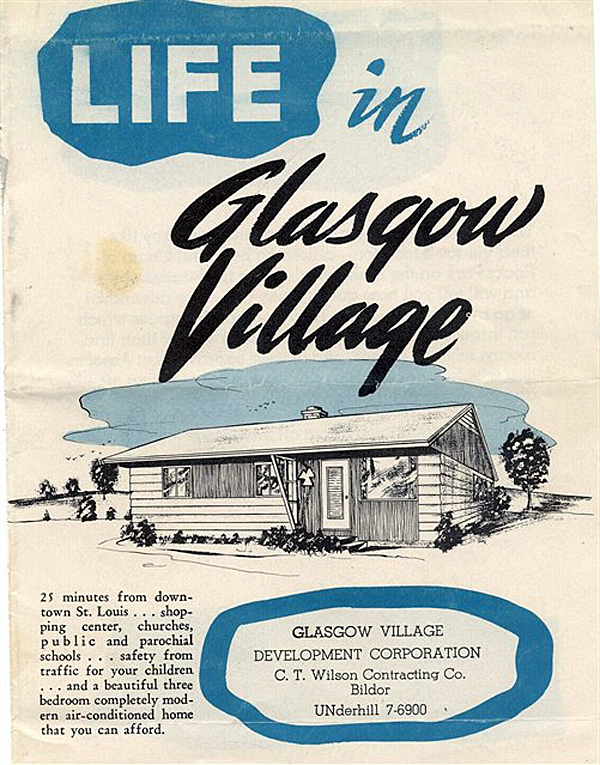
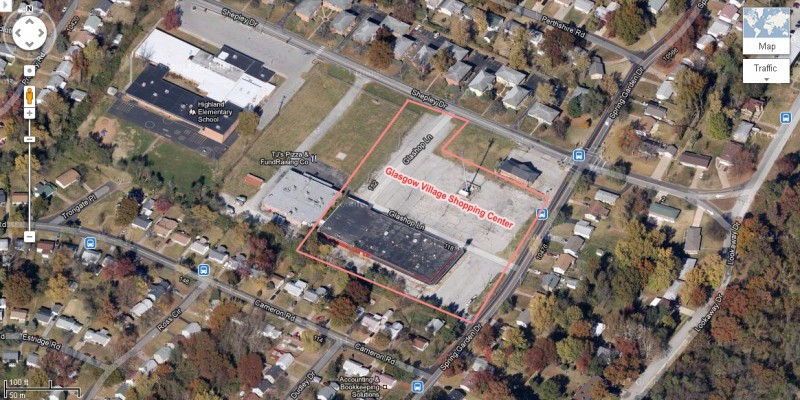
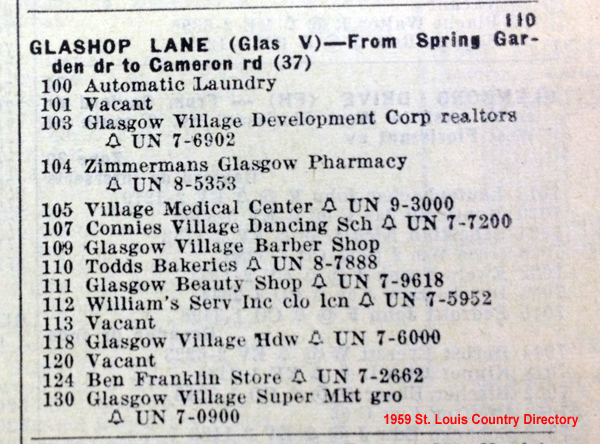
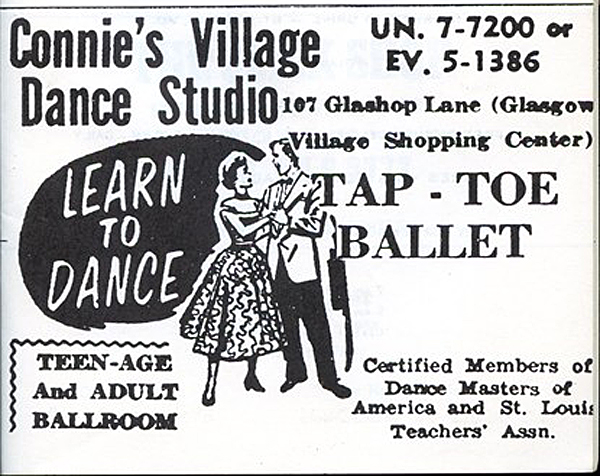
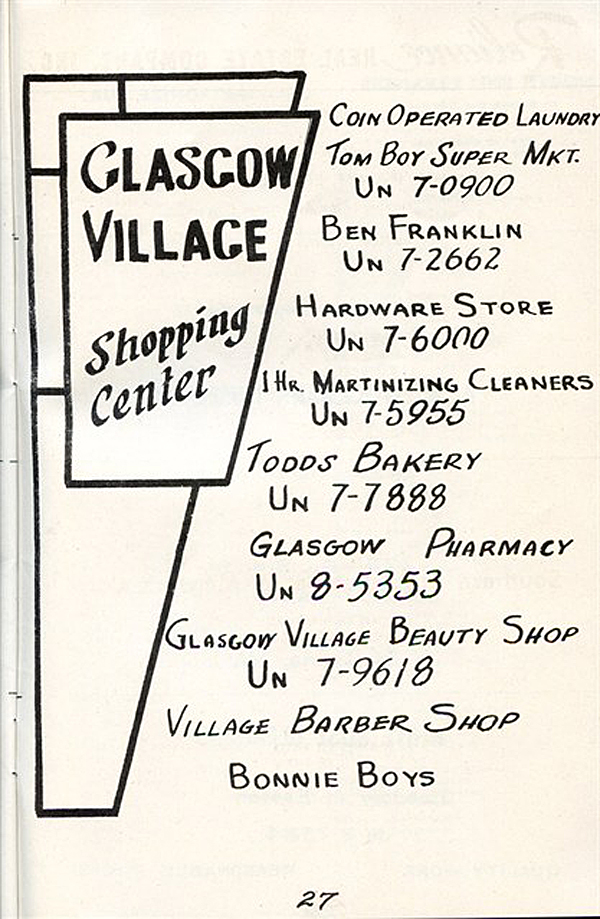
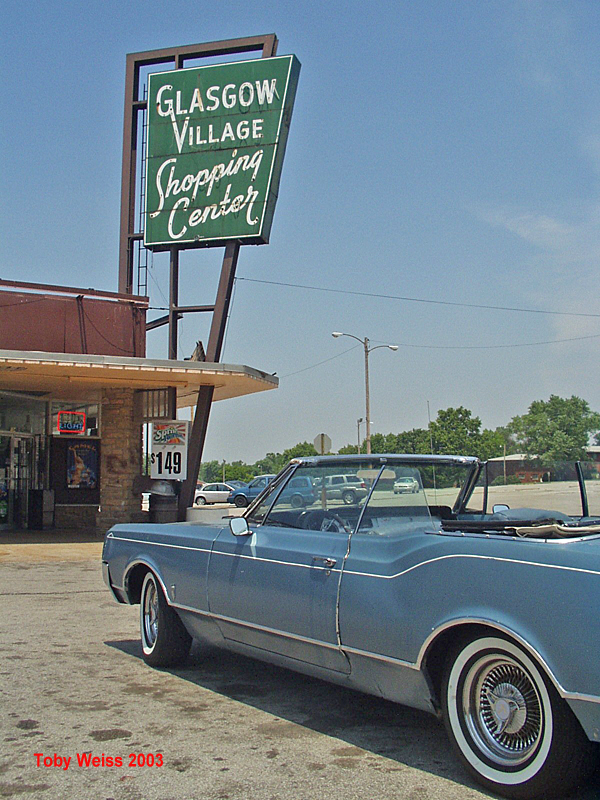
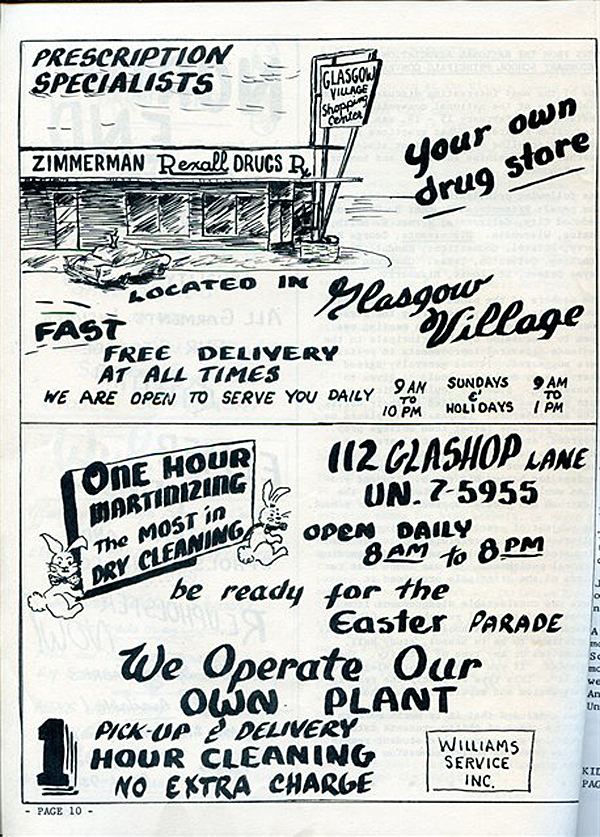
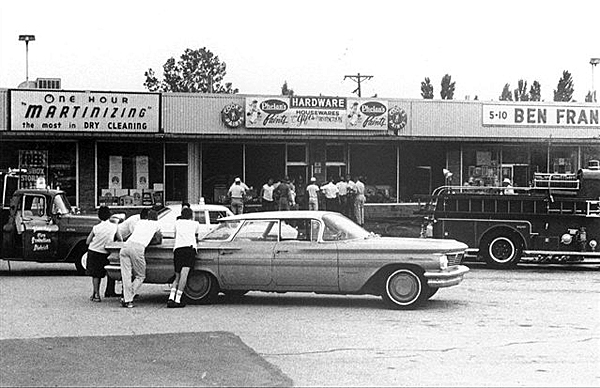
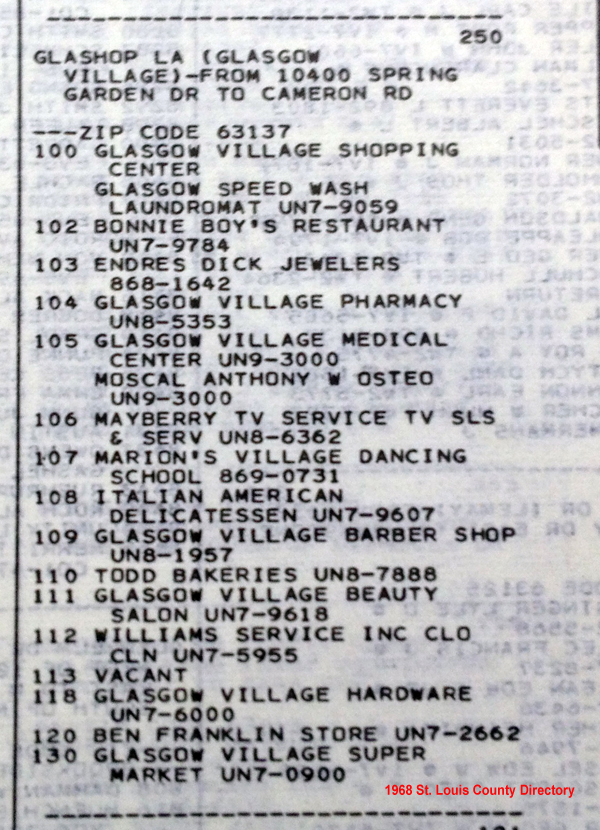
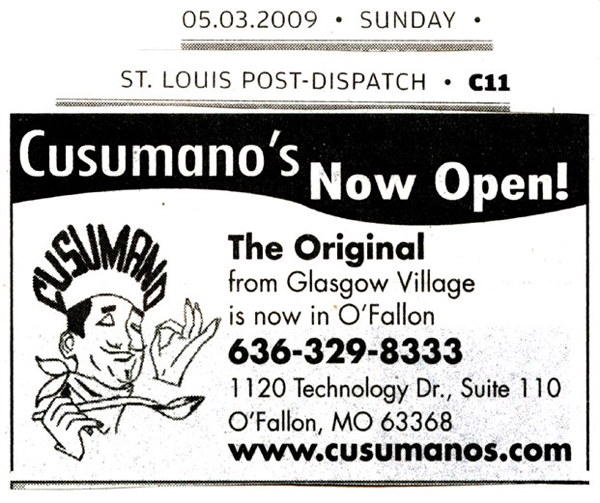
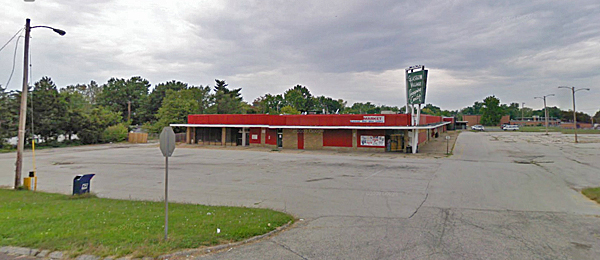
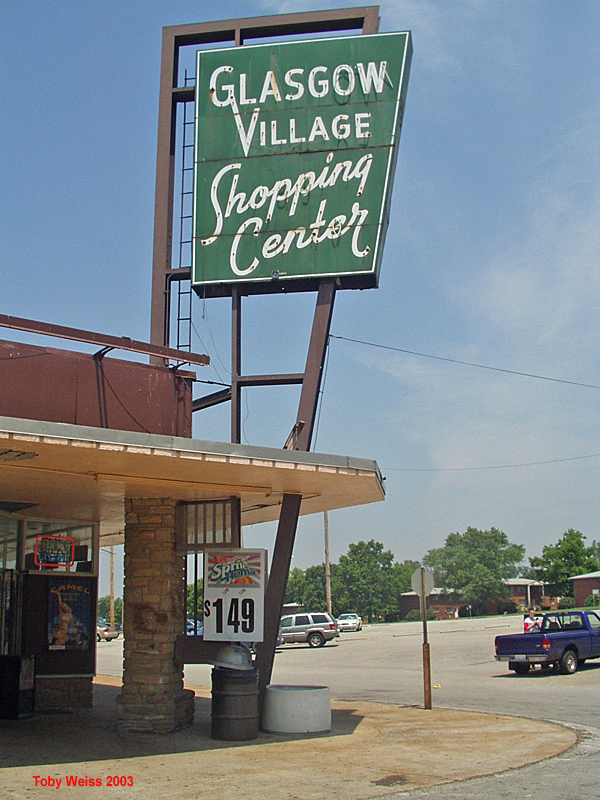
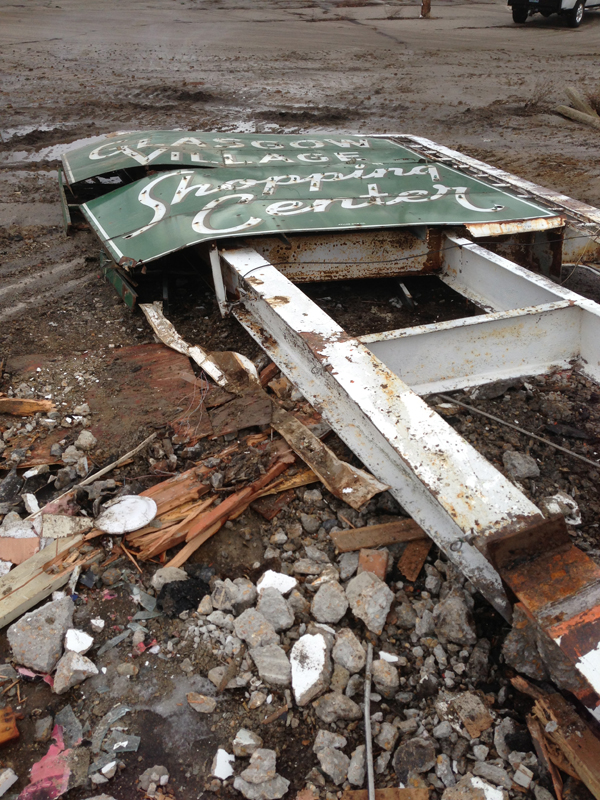
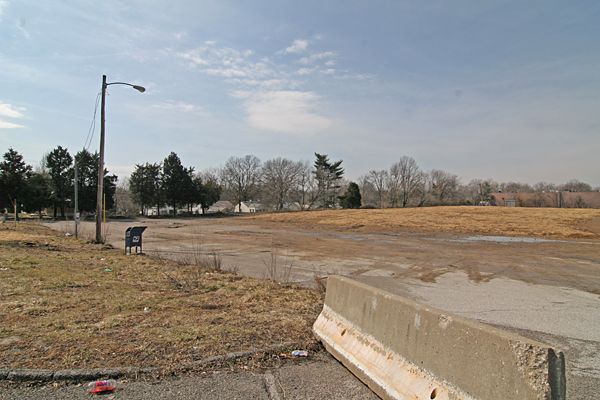
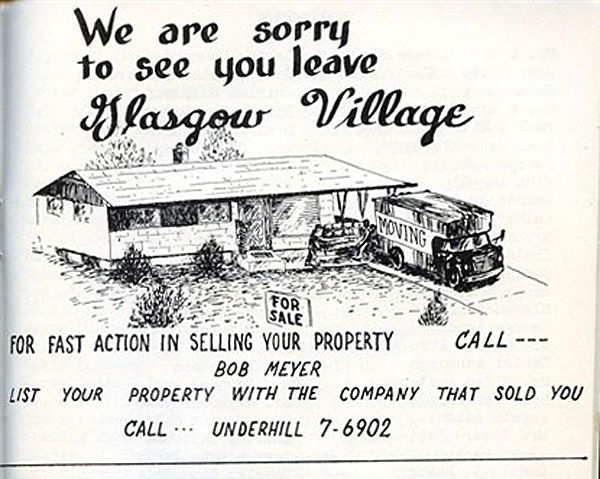
Lived in GV the first 8+ years of my life (1957-1966) just around the corner from the Chain of Rocks Park.
Things remembered about the Center …
The Tom Boy; Ben Franklin’s 5 and 10; Bonnie Boys (when they put up a sign above the jukebox reading “No Dancing” after the Beatles arrived in America)
… and remembered about the neighborhood in general:
“Johnny Rabbit”s mailbox with the bunny ears on it
Seeing Julian Javier (Cardinal Great) at Tom Boy
The ponies making their morning and evening walks to and from the amusement park – right down our street (Dundee Circle)
Going with the neighborhood kids to the park to get a soft serve cone after dinner
We led a very sheltered life back then. I didn’t want to move; and we soon lost touch with all our neighborhood friends – which was (is) a shame.
Loved that shopping center. Dr. Moscal made house calls!!! Hours and hours spent picking out the right model airplane to build in the Ben Franklin store; then spent the change from my dollar on the penny-candy. Great little community. Won my first (and, ONLY! LOL!!) “beauty” contest there (1959 GVIA King of Glasgow Village – Tina Marie Pressey, are you out there!?!? – Had the biggest crush on her; I was 4 and she was 3 years of age…). Hated leaving it, but my parents bought a larger house (growing family) in north city. Moved from there 5 years later to the south side…
My family lived on Hobkirk Dr. from 1957 to 1963. We walked to St. Catherine’s school and rode our bicycles to the Glasgow Village Shopping Center. (we just called it “the Center”).
I remember the community group named Glasgow Village Improvement Association which held a summer fair in the vacant area between Highlands school and “the Center” every year.
Our family moved to Lookaway Drive in 1963 which put us closer to the center. I remember using our allowance and money earned cutting grass to buy penny candy and toys at the Ben Franklin store. And stopping at the Rexall Drug for cold sodas after church on Sunday when all else was closed.
I also recall eating ice cream cones at Bonnie Boys on hot summer days. They served a soft style ice cream (it was advertised as “ice milk”), which now reminds me of Dairy Queen.
Glasgow Village was a near quiet area when I moved on Lookaway Drive in 1980. It is an example of white flight to more remote areas in St. Louis County. First you need to clean up the area and get rid of litter and try to resell the homes. Maybe a developer ccould restore some of the homes. Maybe neighbpors could adopt some homes and cut the lawns and keep the area litter free.
You have to start somewhere abd take pride in your home and your community.
It can look better if some of the people band together. Band together and clean up the area and make it litter free. If you live next to a vacant home adopt iot and keep the outside litter free and cut the front and back lawn. Take pride in the community. Maybe a business will establish a small store or a developer will come in and restore. Don’t give up hope.
I was born in Glasgow in 1978. Lived there for 16 years. And I remember this mall when it was still decent. I used to ride my bike to the general store and buy penny-candies. Cusumano’s, to this day, is still one of my favorite pizzas of all time. I have a lot of memories of riding to or driving past this mall.
I just don’t know what to say. This is the first I heard of it being torn down, and I’m just devastated. I had seen the mall recently, and knew it was in poor shape, but to see it just gone is like a kick in the stomach. And it’s not like it’s being replaced with something better, which would be progress and I’d be ok with, but it’s just an abandoned, concrete parking lot where my childhood memories once stood.
I’m probably like a lot of other people my age when I say I took this place for granted when I was a kid. It just was. Never once had I thought at the time at one point it would just be gone.
It probably sounds weird to anyone living in Glasgow Village today, but it will be missed. I wish I could show you all the way it was, the way I remember it.
I lived on Tay Road from 1957 (My birth) until 1976, when we moved to Maryland Heights. Was a great place to grow up. I went to St. Pius and then to East Junior, and Riverview one year.
It was a simple, plain ol’ middle-class neighborhood, nothing fancy. We were members of Northshore and went there to use the pool in the summer. When older, used to party on the closed-down Chain of Rocks bridge. Remember the double Ferris Wheel?
Yea, I wouldn’t call it “remote”. Especially after 270 got there and they connected it to Lilac Avenue. We’d take Riverview to Broadway and got on I-70 near Calvary Cemetary to go to the ball yard, and it wasn’t much of a chore.
Wanted to go visit last time I was in town (2012) but my brother talked me out of it.
This is America. NOTHING stays the same or is truly permanent. It’s not in our nature.
I lived in Riverview in the late ’40s and all of the ’50s. When Glasgow village construction began I remember several of the contractor’s employees bitten by rattlesnakes, which were common in the area at that time.
Great Memories!
We move to Glasgow in the winter of 1953 from Cleveland,Ohio. I think dad paid $10,000 for the house. What a great time and place to grow up. It seemed like everybody knew everybody. We could walk or ride our bikes every where. I went to Jeffery Street School for third grade while Glasgow Elementary was being built.We lived on Lancashire. The street behind us was Caitheness. Behind that was woods. I could go on and on. Thanks for your posting.
PS I remember when Glasgow Village Shopping Center was woods.(Man this sounding like my dad we he would bore us with his stories about growing up in about Cleveland.)
Yes. Rick Ottinger
I Worked for Mr.Weiss in the hardware store when I was fifteen.Later I worked for my Father when he took over the store. Do you know me?
I lived in the Village from 1991 to 2001 and still miss it today. As to “remote”? – not at all. Glasgow to downtown? 15 minutes. Glasgow to Fenton? 30 minutes. Glasgow to St. Charles? 20 minutes. I loved my little 2BR house – a stone’s throw from the elementary school. I still drive through the neighborhood on occasion. It makes me sad to see the disrepair of some of the area, but there are still quite a few folks keeping the faith. I hope it can come back for the next generation.
Even though the houses/lots were tiny, the families I knew in Glasgow Village were solidly middle class. My best friend’s father was a St. Louis City police captain (as Toby alluded to), and another friend’s father is a retired McDonnell/Boeing engineer (who actually lived in his house until a few years ago). The other commenters are exactly right; we never felt far from anything. Hop on 67/367, and get downtown, and get on 270, and get anywhere else you needed to go. Thanks for this great article!
I grew up directly across the street from the old shopping center. I remember on Sundays our dad taking us there to walk up and down the parking rows looking for change people had dropped out of their pockets. So sad to see it all go.
I grew up in Riverview and I have to agree with Kevin – it wasn’t remote. I could get to either 70 or 270 in about 5 minutes and I could get to downtown (and back via Broadway) much quicker than anyone I knew that lived out west. However, the rooms and lots are tiny for the most part. There are too many little homes that were shoddily built in this area to support people living in the few nice homes that are around the area. Not to mention the crappy apartments that were allowed to be built and then quickly went Section 8. So when blacks moved in the whites fled to St. Charles County. I think my entire gradeschool class is out there.
Nice job Toby, our paths crossed again.
And thank you for finding the errors, Nick. All corrected!
Thanks for putting this article together!
but…it wasn’t remote. we could go to cardinals games and there were NO stoplights to interfere. a clean, straight shot to the big city with easy access. home in 15 minutes.
but, people want bigger and better housing. as speed limits were lifted folks could build bigger better houses further out. as this happens, better housing stock is freed up all thru the chain. and, though small by current standards those glasgow village houses were solidly built and will last forever or until they burn. just like washington park, il.
glasgow village was once an appendage to baden. once the main goes down, the satellite bedroom community follows. happened in ESTL/washington park. happened in north side baden/glasgow village.
St. Louis County actually worked with the demo company, to make it possible for the trustees to try to preserve the sign. Feel free to contact me if you want any further details.